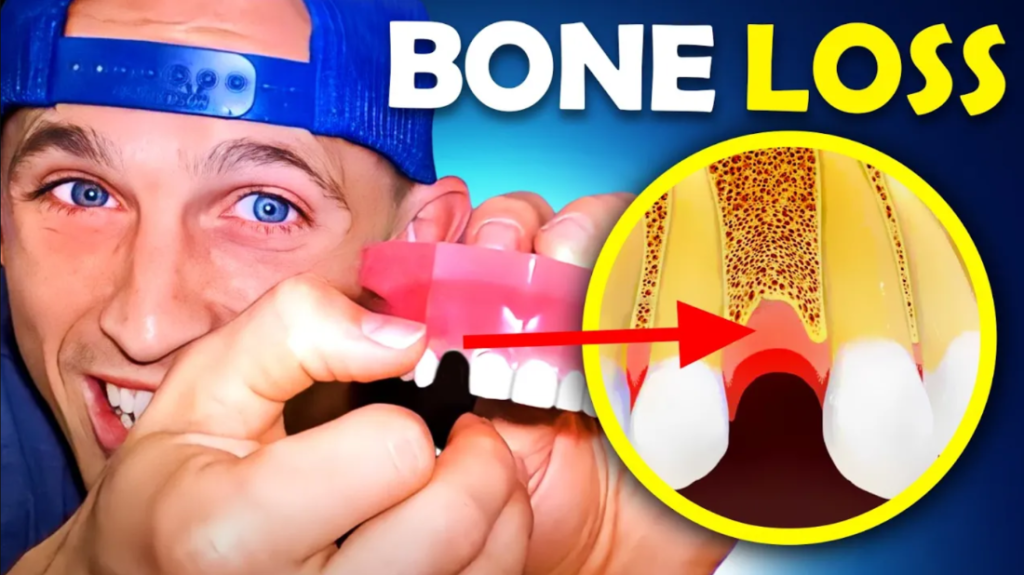
If you're an adult contemplating braces or Invisalign to achieve that perfect smile but concerned about bone loss around your teeth, this post is for you.
In our previous blog, we discussed the implications of direct-to-consumer aligners like Smile Direct Club. Today, we're addressing a related topic – bone loss and its impact on your orthodontic journey.
The Role of Bone in Teeth Stability
Before we dive into the details, let's understand the critical role that bone plays in maintaining the stability of your teeth. Our teeth initially grow within our jawbones, eventually settling into their proper positions. The bone not only supports the teeth but also ensures their stability.
Healthy bone height is essential for the longevity of your teeth. Generally, there's a slight gap between the gum and the bone around your teeth. However, some factors can lead to bone loss, particularly due to poor oral hygiene and the development of gum disease, also known as periodontal disease. Inadequate hygiene practices can result in bacteria producing acid on your teeth, which can lead to cavities, white spots, or even cavities.
The Connection Between Bone Loss and Teeth Movement
Now, let's explore the link between bone loss and teeth movement. When you opt for braces or Invisalign to straighten your teeth, you're essentially moving them. As your teeth shift, your bone must remodel to accommodate these changes, allowing the teeth to move smoothly and reach their desired positions.
Healthy bones facilitate this process, ensuring your teeth can move as intended. However, if you have existing bone loss or periodontal issues, it's crucial to address these concerns before embarking on orthodontic treatment.
Why Bone Health Matters in Orthodontics
Here's why bone health is paramount when seeking orthodontic treatment:
- Effectiveness: If you have healthy bone, your teeth can move more effectively and predictably. This is especially important for achieving the best results within your expected treatment timeframe.
- Preventing Further Loss: If you undergo orthodontic treatment with compromised bone health, there's a risk of exacerbating the bone loss. This can lead to tooth mobility and a higher chance of tooth loss, which is something we all want to avoid.
When to Seek Professional Evaluation
Whether you're young or an adult, a visit to your orthodontist is essential before initiating any orthodontic treatment. They will assess the health of your teeth, review X-rays, and consider your dental history.
In case you have a history of bone loss or periodontal issues, your orthodontist may recommend consulting with specialists like periodontists, who can provide deep cleanings and specialized treatments to manage bone and gum health.
For those who've experienced bone loss in the past but have stabilized the condition, it's still possible to undergo orthodontic treatment, provided the bone loss isn't actively progressing.
In Conclusion: Prioritize Bone and Gum Health
In the pursuit of straight teeth and a beautiful smile, it's vital to prioritize the health of your bones and gums. Proper evaluation and addressing any underlying issues with your local orthodontist, dentist, or specialist will put you in the best position to embark on your orthodontic journey.
If you have any experience with pre-treatment orthodontics, post-treatment orthodontic work for your bones, or any questions regarding bone health and orthodontics, feel free to contact us for an appointment. Remember, this post is a general overview, and individual cases may require personalized assessments.
Book your appointment with Dr. Ryan Packard today for your initial consultation. Don't hesitate to reach out to us for a consultation. We're committed to enlightening you about the world of straight teeth and beautiful bites, so stay tuned for more valuable insights.
Your journey to a radiant smile begins with the right foundation – healthy bones and gums.




